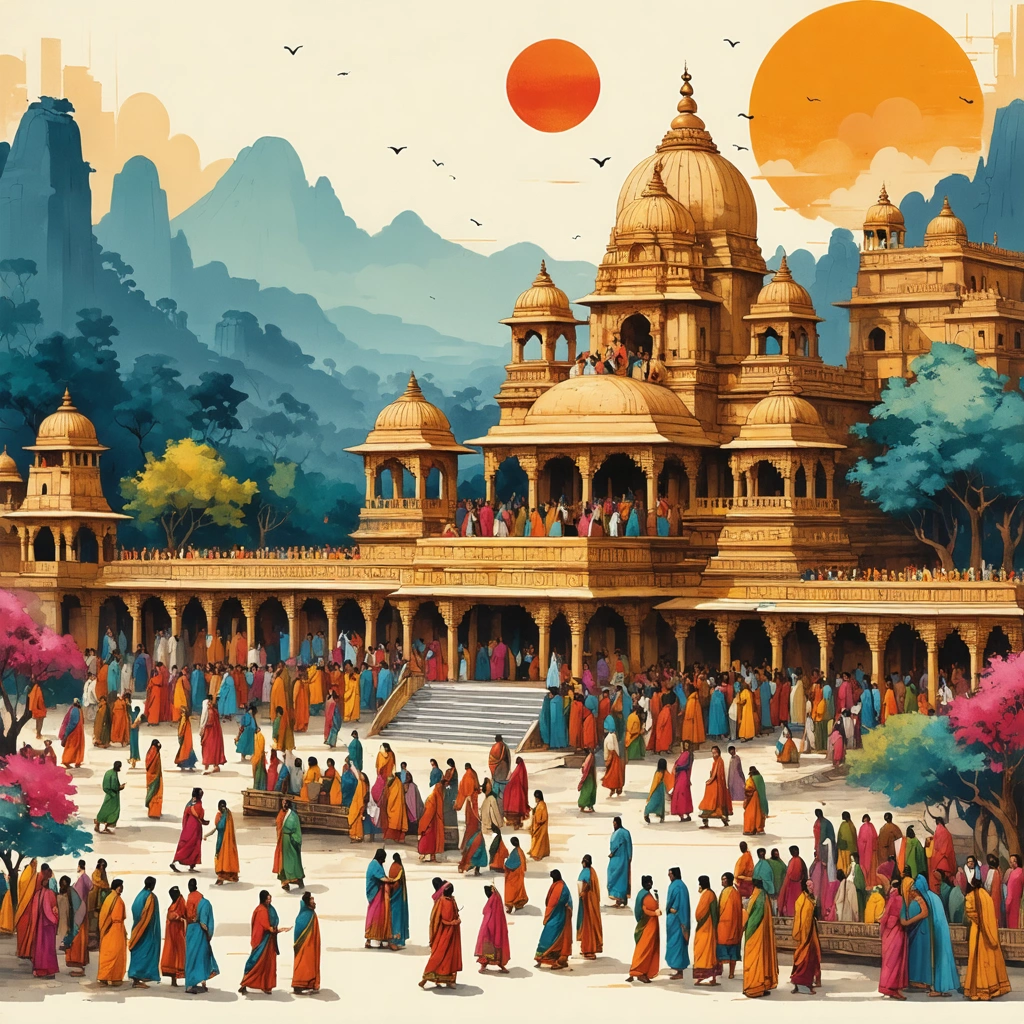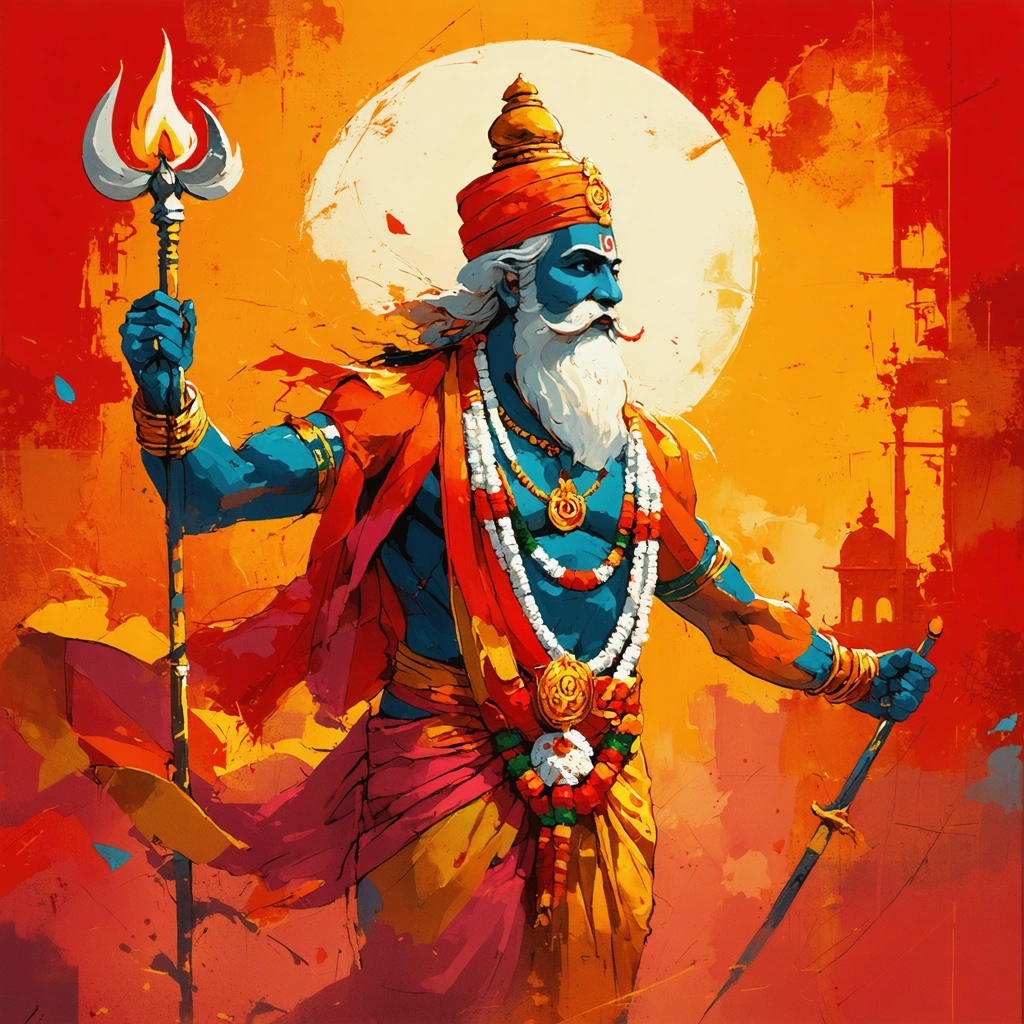Spiritual Festivals in India: Immerse in the spiritual significance of India’s festivals in 2025.

Unveiling the Heartbeat of India’s Spiritual Calendar
Have you ever wondered why India’s calendar is dotted with so many festivals, each vibrant with colors, chants, and rituals? It’s not just about celebration; it’s about connection—connecting with centuries of tradition, with the divine, and with the inner self. As 2025 unfolds, the spiritual festivals across India invite us to pause, reflect, and rejuvenate our spirits in ways that transcend the ordinary. Yet, in the hustle of modern life, the deeper meanings behind these sacred days often slip through our fingers like grains of sand.
Take, for example, Hindu Nav Varsh—the Hindu New Year. It’s not just a date on the calendar; it’s a cosmic reset button, a time when the universe itself is believed to start afresh. But how many of us truly grasp the layers of symbolism wrapped in the celebrations? Or consider Vishwakarma Jayanti Kab Hai—a day dedicated to the divine architect, revered by artisans, engineers, and craftsmen alike. Knowing when this festival falls is one thing, but understanding its spiritual significance and the rituals performed can transform the day into a profound experience.
And then there’s Ahoi Ashtami Vrat Katha, a fasting ritual observed with devotion by mothers for the well-being of their children. Beyond the ritualistic fast lies a rich tapestry of mythological stories and heartfelt prayers, binding generations through faith and hope. Yet, these stories are often told in hushed tones, and the significance behind the fast is sometimes lost in the rush of daily life.
Why Spiritual Festivals Matter More Than Ever in 2025
In an era dominated by technology and rapid change, spiritual festivals offer a sanctuary—a momentary retreat from screens, deadlines, and noise. They remind us that beneath the surface of our busy lives lies a quest for meaning and connection. But here’s the catch: without understanding the spiritual essence, these festivals risk becoming mere social events, stripped of their transformative power.
Imagine celebrating the Hindu Nav Varsh not just by lighting lamps or feasting but by embracing its promise of renewal and inner growth. Or observing Vishwakarma Jayanti Kab Hai with a mindful acknowledgment of creativity as a divine gift, inspiring us to honor the crafts in our own lives. And picture engaging with the Ahoi Ashtami Vrat Katha not just as a ritual but as a narrative that strengthens familial bonds and instills hope.
These festivals, when truly understood, have the potential to deepen our spiritual awareness, foster community, and nurture the timeless values that keep the cultural fabric of India vibrant. The challenge lies in bridging tradition with contemporary relevance—making ancient wisdom accessible and alive for today’s seekers.
What You Will Discover in This Guide
This article will be your companion on a journey through the most spiritually significant festivals of India in 2025. You will discover:
- The profound meaning behind Hindu Nav Varsh, including its mythological roots and how it invites personal transformation.
- Insights into Vishwakarma Jayanti Kab Hai—when it is celebrated, who observes it, and the spiritual lessons embedded in its rituals.
- An engaging retelling of the Ahoi Ashtami Vrat Katha, exploring its origins, symbolism, and the heartfelt devotion it inspires.
- Practical tips on how to immerse yourself in these festivals, whether through rituals, meditation, or community activities.
- A glimpse into how these celebrations weave together spirituality, culture, and the rhythms of daily life in India.
Whether you are someone seeking to reconnect with your roots, a spiritual enthusiast curious about Indian traditions, or a traveler planning to experience India’s festivals firsthand, this guide will equip you with knowledge and inspiration. By the end, you’ll see these festivals not just as dates on a calendar but as living, breathing expressions of India’s soul.
So, are you ready to journey into the heart of India’s spiritual festivals in 2025? Let’s begin this exploration of faith, tradition, and the timeless quest for meaning.

Spiritual Festivals in India: Immerse in the Spiritual Significance of India’s Festivals in 2025
India is a land of diverse cultures and rich spiritual heritage, and its festivals reflect this vibrant tapestry. Spiritual festivals in India are not just celebrations but are deeply rooted in religious beliefs, mythology, and traditions that have been preserved over millennia. As we step into 2025, understanding these festivals’ spiritual significance can offer profound insights into Indian culture and spirituality.
What Are the Major Spiritual Festivals Celebrated in India in 2025?
India’s calendar is dotted with numerous spiritual festivals, many of which are linked to the Hindu lunar calendar, while others follow specific regional or community calendars. Some of the key festivals to look forward to in 2025 include:
- Hindu Nav Varsh (Hindu New Year): Different regions in India celebrate their Hindu New Year on varying dates, but it generally marks the beginning of a new lunar year. It is a time for new beginnings, spiritual renewal, and prayers for prosperity.
- Vishwakarma Jayanti: Dedicated to Lord Vishwakarma, the divine architect, this festival honors creativity, craftsmanship, and engineering skills.
- Ahoi Ashtami: A unique fasting day observed by mothers for the well-being and longevity of their children, accompanied by the recitation of the Ahoi Ashtami Vrat Katha.
Why Is Hindu Nav Varsh Important and How Is It Celebrated?
Hindu Nav Varsh marks the start of the new year according to various Hindu calendars, with celebrations varying across India:
- Spiritual Significance: It symbolizes renewal, hope, and the opportunity to leave past mistakes behind. Devotees perform pujas (ritual worship) to invoke blessings from deities for health, prosperity, and happiness.
- Regional Variations: For example, in Gujarat and Maharashtra, the festival of Gudi Padwa marks the Hindu New Year, while in Bengal, it is celebrated as Poila Boishakh. In South India, Ugadi is the equivalent celebration.
- Rituals and Customs: People clean their homes, decorate them with rangoli (intricate floor designs), prepare traditional dishes, and visit temples. Many also begin new ventures or financial accounting on this day, believing it to be auspicious.
When Is Vishwakarma Jayanti in 2025 and What Is Its Significance?
Vishwakarma Jayanti Kab Hai in 2025 falls on the 17th of September, though dates may slightly vary according to regional calendars. This festival honors Lord Vishwakarma, the divine craftsman and architect who is revered as the god of creation and innovation.
The significance of Vishwakarma Jayanti lies in acknowledging the skills and craftsmanship of workers, engineers, artisans, and architects who shape the physical world.
- How It Is Observed: Devotees worship their tools, machines, and instruments, seeking blessings for safety, success, and efficiency in their work.
- Community Impact: Many industrial and manufacturing units celebrate this day with ceremonies and feasts, emphasizing the cultural respect for manual labor and innovation.
What Is the Ahoi Ashtami Vrat Katha and Why Is It Observed?
Ahoi Ashtami Vrat Katha is a cherished story recited by mothers during the fast observed on Ahoi Ashtami, a Hindu festival dedicated to the welfare and longevity of children. The vrat (fast) is observed on the eighth day (Ashtami) of the Krishna Paksha (waning moon) in the Hindu month of Kartik.
The vrat involves fasting from dawn to moonrise and performing a special puja with pictures of Ahoi Mata, a divine mother figure. The Vrat Katha narrates the tale of a mother who prays diligently for her children, emphasizing themes of devotion, sacrifice, and divine grace.
- Spiritual Purpose: The fast is believed to invoke the blessings of Goddess Ahoi for the protection and long life of children.
- Ritual Steps:
- Drawing or setting up an image of Ahoi Mata near a water source
- Offering sweets and fruits after moonrise while listening to the Vrat Katha
- Breaking the fast with family members
How Do Spiritual Festivals Impact Indian Society and Individual Well-being?
Spiritual festivals serve multiple purposes beyond religious observance:
- Cultural Cohesion: Festivals like Hindu Nav Varsh, Vishwakarma Jayanti, and Ahoi Ashtami foster community bonding through collective rituals and celebrations.
- Psychological Benefits: Participating in festivals provides emotional upliftment, a sense of belonging, and mental peace through spiritual practices.
- Preservation of Heritage: These festivals keep ancient stories, values, and traditions alive, passing them on to future generations.
- Economic Impact: Festivals boost local economies through tourism, handicraft sales, and food industries, especially in culturally rich regions.
How Can One Immerse Themselves Deeply in the Spiritual Significance of These Festivals?
To truly appreciate the spiritual depth of Indian festivals in 2025, consider the following approaches:
- Learn the Stories and Symbolism: Understanding the myths and legends, such as the Ahoi Ashtami Vrat Katha, enriches the experience.
- Participate in Rituals Mindfully: Engage with the ceremonies, fasting, and prayers not just as traditions but as acts of devotion and reflection.
- Visit Temples and Cultural Centers: Many temples host special events during festivals, offering insights into rituals and spiritual teachings.
- Connect with Local Communities: Sharing in local celebrations provides authentic exposure to the cultural nuances and collective spirit.
In summary, India’s spiritual festivals in 2025, including Hindu Nav Varsh, Vishwakarma Jayanti, and Ahoi Ashtami, offer rich opportunities to explore the country’s deep-rooted spirituality and cultural heritage. By understanding their meanings, timings, and rituals, one can experience not only the joy of celebration but also the profound wisdom embedded in these age-old traditions.



